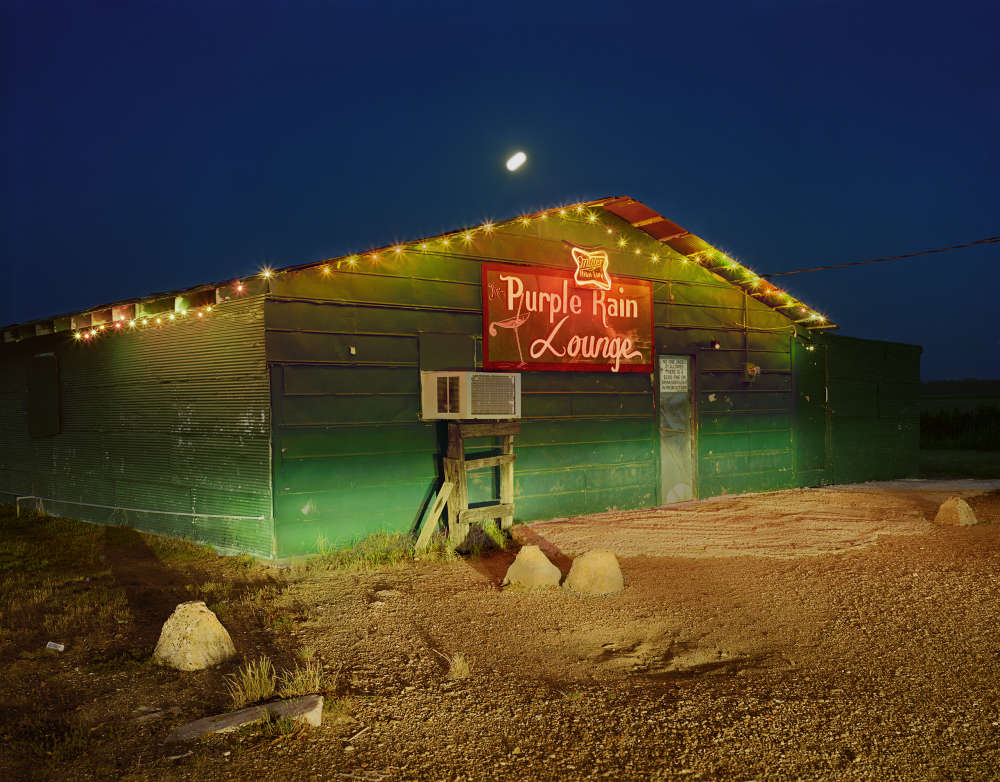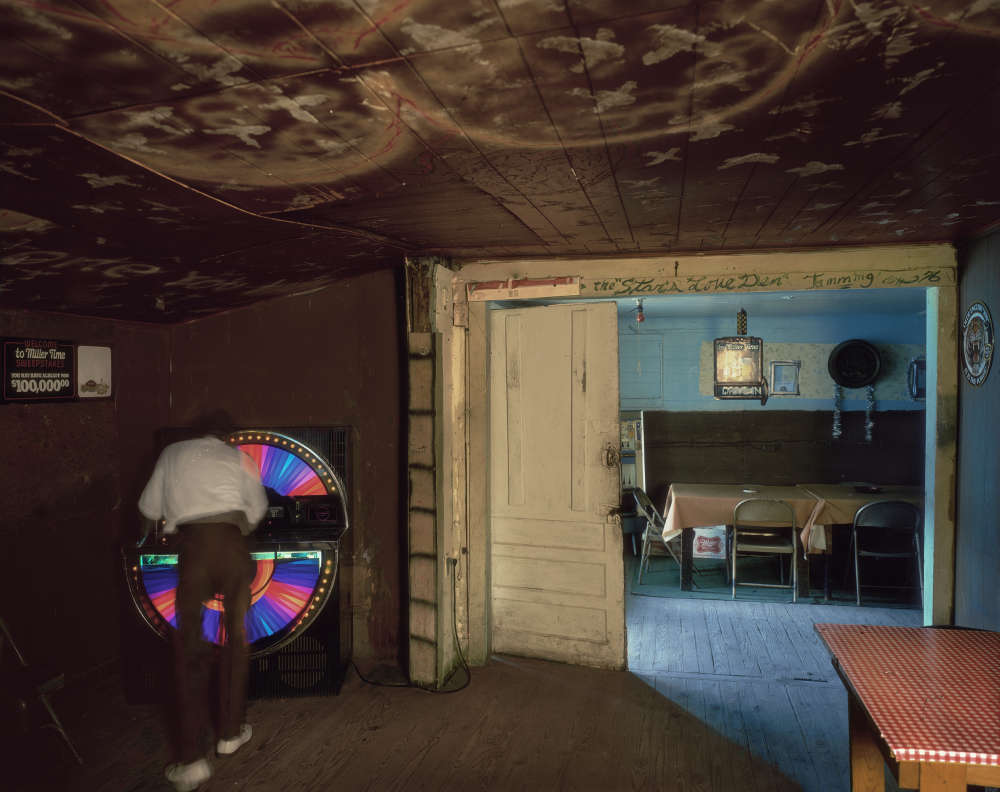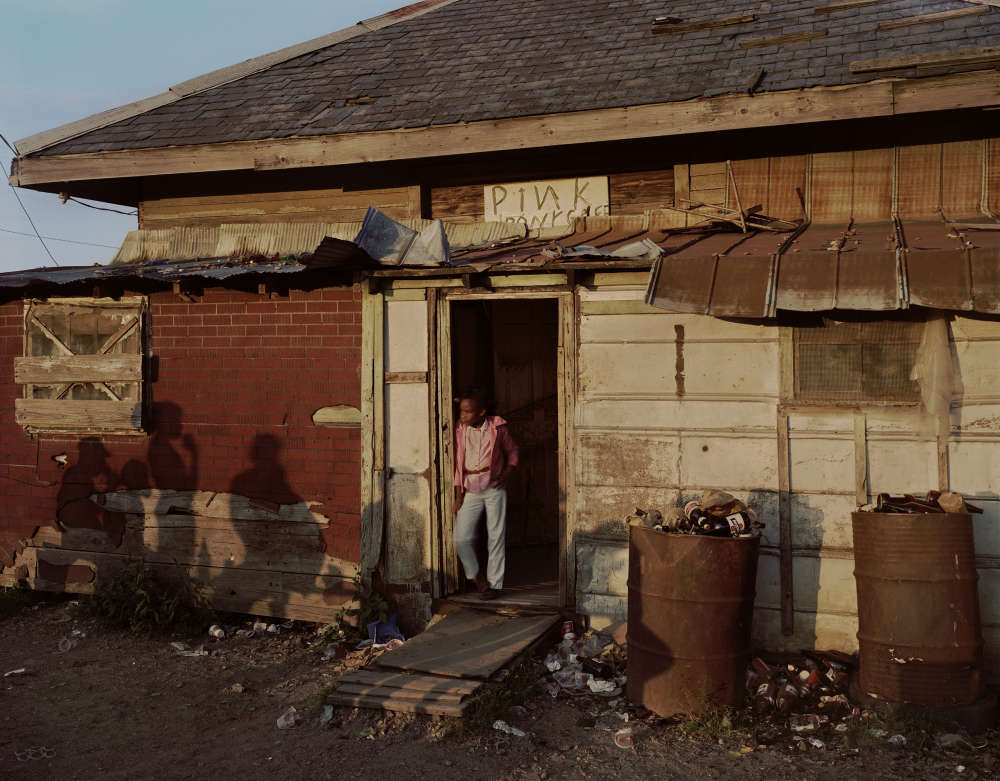Birney Imes
Works
-
 Birney Imes, The Purple Rain Lounge, Duncan, 1989
Birney Imes, The Purple Rain Lounge, Duncan, 1989 -
 Birney Imes, Royal Crown Cafe; Boyle, Mississippi, 1983
Birney Imes, Royal Crown Cafe; Boyle, Mississippi, 1983 -
 Birney Imes, Riverside Lounge, Shaw, 1989
Birney Imes, Riverside Lounge, Shaw, 1989
-
 Birney Imes, The Social Inn, Gunnison, 1989
Birney Imes, The Social Inn, Gunnison, 1989 -
 Birney Imes, Freedom Village Juke, Washington County
Birney Imes, Freedom Village Juke, Washington County -
 Birney Imes, The Social Inn, Gunnison, 1989
Birney Imes, The Social Inn, Gunnison, 1989
-
 Birney Imes, Ferry Club, Lowndes County, 1989
Birney Imes, Ferry Club, Lowndes County, 1989 -
 Birney Imes, Riverside Lounge, Shaw, 1986
Birney Imes, Riverside Lounge, Shaw, 1986 -
 Birney Imes, Blume with T.P., Summer, 1986
Birney Imes, Blume with T.P., Summer, 1986
-
 Birney Imes, Turks Place, Laflore County, 1989
Birney Imes, Turks Place, Laflore County, 1989 -
 Birney Imes, Baileys Late Night Spot, Rolling Fork
Birney Imes, Baileys Late Night Spot, Rolling Fork -
 Birney Imes, Blume with Chicken, January, 1986
Birney Imes, Blume with Chicken, January, 1986
Biography
Birney Imes Biography
For more than 20 years, Birney Imes roamed the countryside of his native Mississippi photographing the people and places he encountered along the way. Born Vinton Birney Imes III in Columbus, Mississippi, in 1951, he went on to graduate with a degree in history from the University of Tennessee at Knoxville in 1973. Growing up white in the South during the Civil Rights Movement helped shape his views on history and that is where his photography career originated from. After graduating, Imes set out to teach himself the art and craft of photography. His works included commercial and studio photography alongside photojournalism. One subject is his passion: his homescapes that he grew up within rural Mississippi.
Imes once said, “When my high school was integrated in the late ‘60s, the veil began to part, and I started to see the richness and diversity of culture that till then had been hidden from me. When I began photographing six or seven years later, it was in part my wish and my need to overcome this ignorance that helped make my choice of subject an obvious one.”
Working in both black and white and color, Birney Imes’ photography takes viewers inside juke joints and dilapidated restaurants scattered across that landscape. There Birney Imes introduces the viewer to, as one writer put it, “the characters and locales that linger in the margins of Southern memory and culture.”
Juke Joint is his most famous collected works, published in 1990. Mississippi-born writer Richard Ford states the photographs in this masterpiece evoke a “thrilling otherness.” Those who have lived in images such as those understand. People who don’t come from those backgrounds gain a deeper understanding of Imes’ home. Visages from Juke Joint include color photos of a dilapidated juke joint with a blue facade and a blue truck adjacent to it. Is the blue a color of regularness and ordinary, like the sky? Or is the blue symbolic of the sameness of life in rural Mississippi that returns from season to season when it’s time to plant crops and pick them months later?
Another photo shows a black-and-white image of dead rabbits hanging from the waist of a young hunter, learning his craft from his father. The young man’s torn pant legs are bloodied from his haul, with proud papa in the background similarly dressed. These are hunters who need these animals for food, much like Americans did before modern conveniences. Yet these impoverished cultures live on in America in the 21st century, either by tradition or by choice.
Birney Imes’ photography has been collected in three books: Juke Joint, Whispering Pines and Partial to Home, and has been exhibited in solo shows in the United States and Europe. Birney Imes' photography is also included in the collections of the Museum of Modern Art in New York, The Art Institute of Chicago, La Bibliotheque Nationale in Paris and many public and private collections in the U.S. and abroad. In 1985 he received the National Endowment Art Fellowship Grant.
In 1996, Imes followed in the footsteps of his father and grandfather when he became editor and publisher of his hometown newspaper, the Columbus Commercial Dispatch. Imes writes a regular column and he sometimes takes pictures. Imes not only lives the culture in which he grew up, but he has successfully passed it on.













